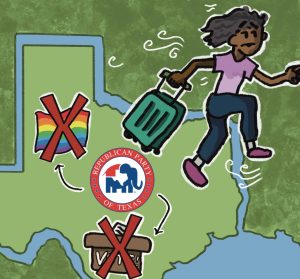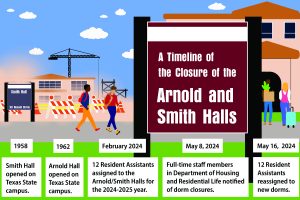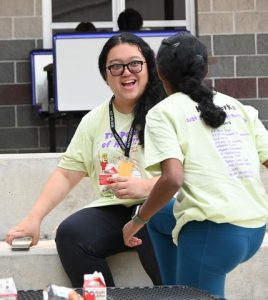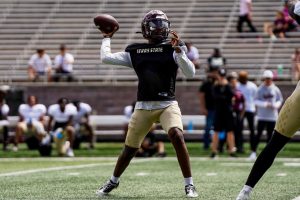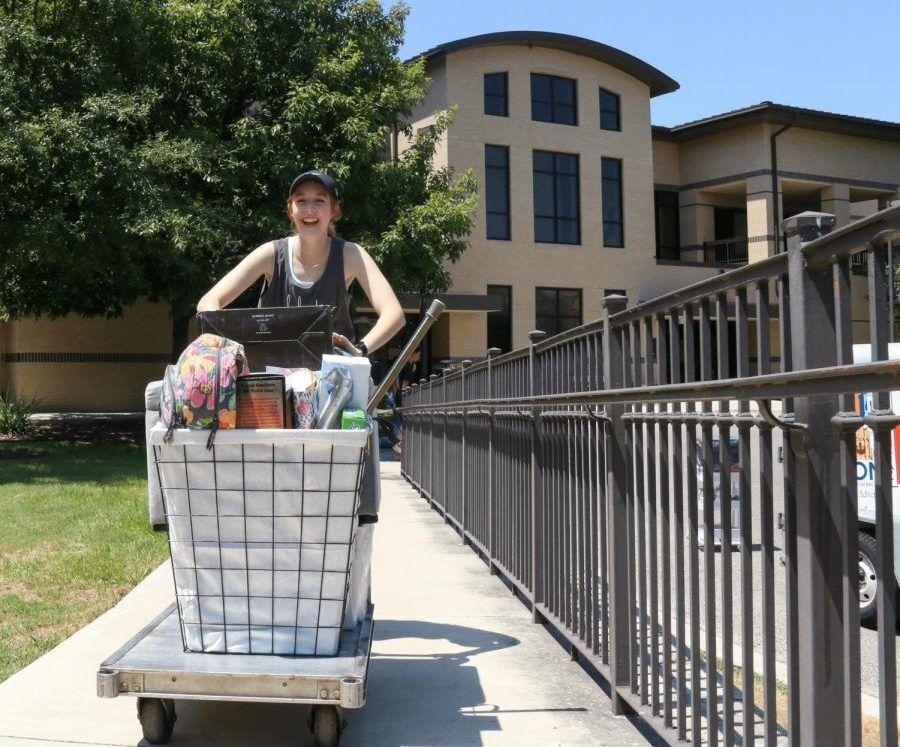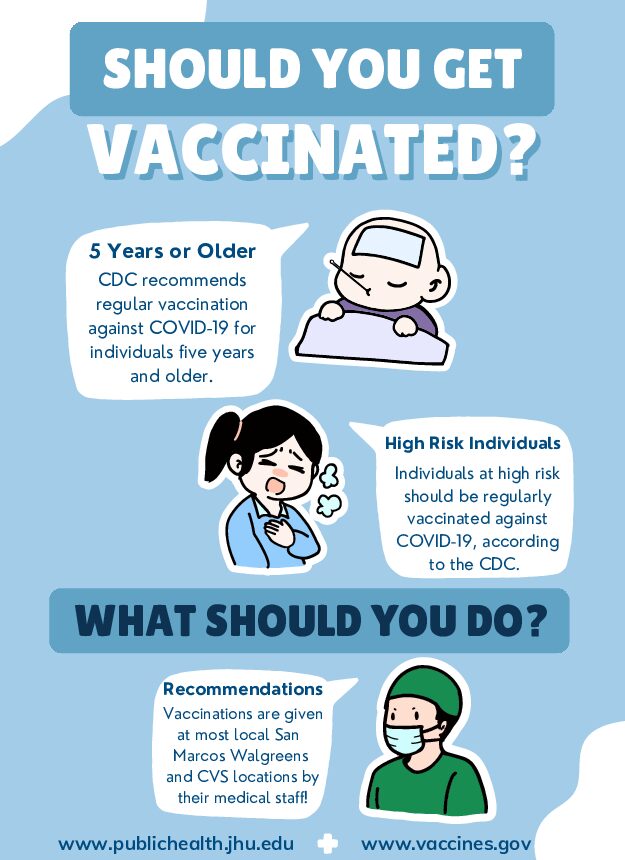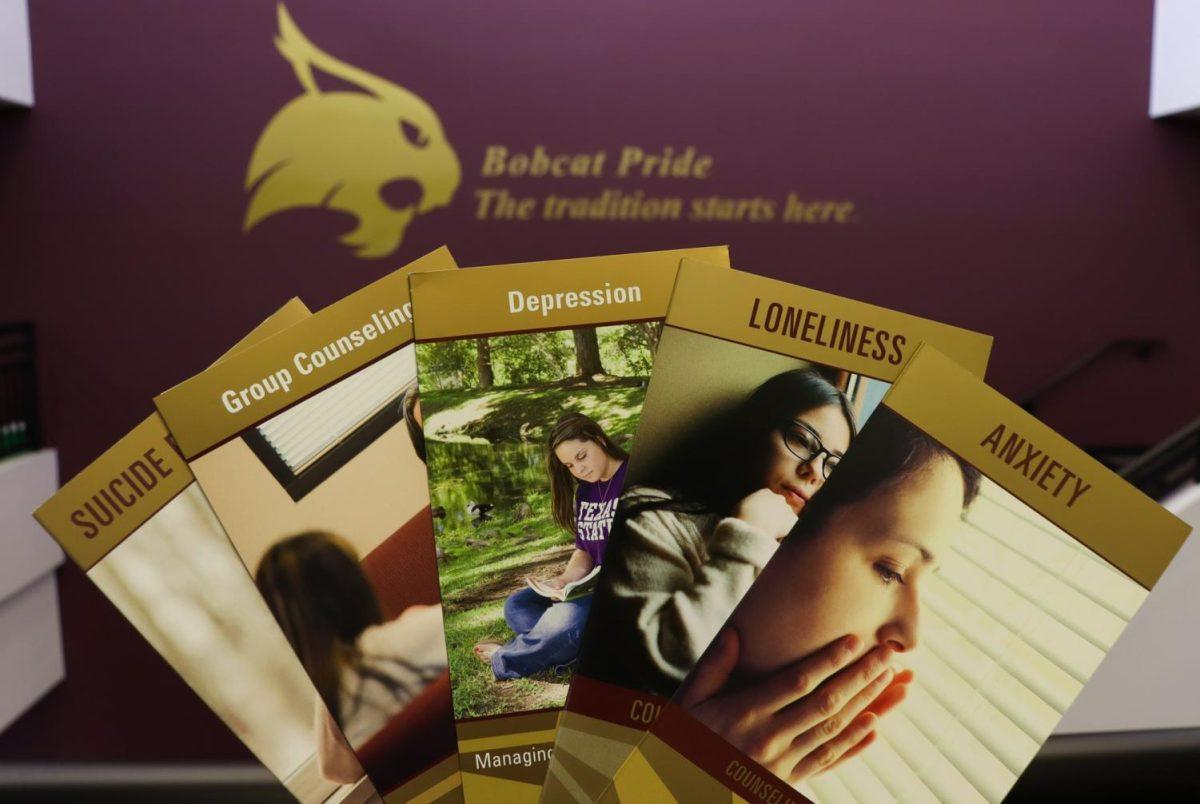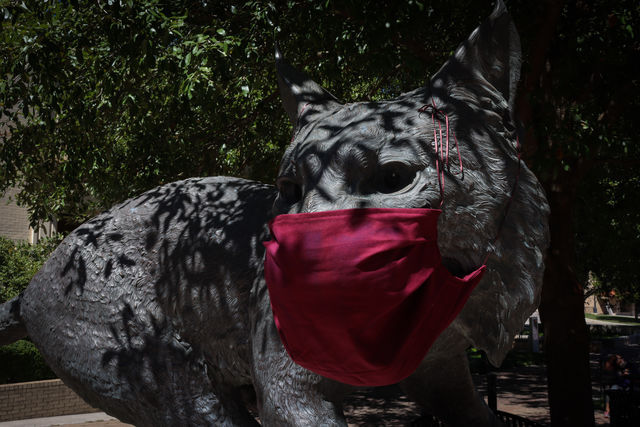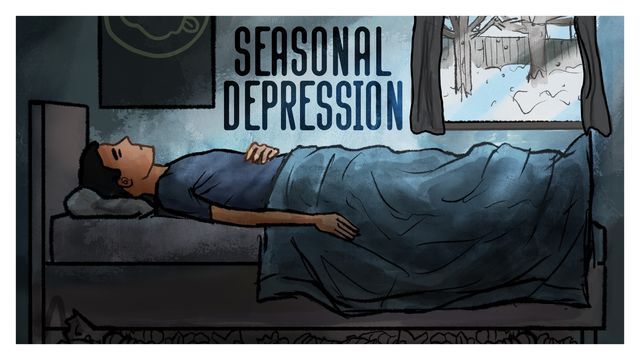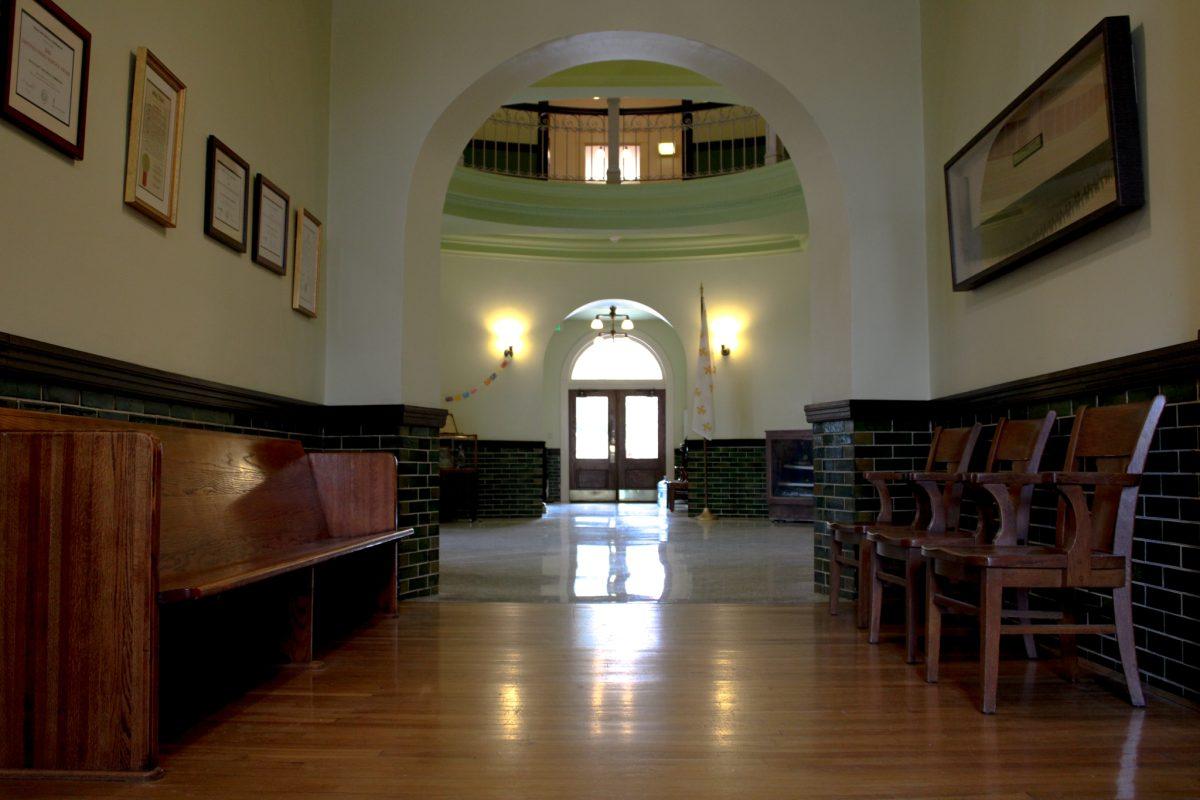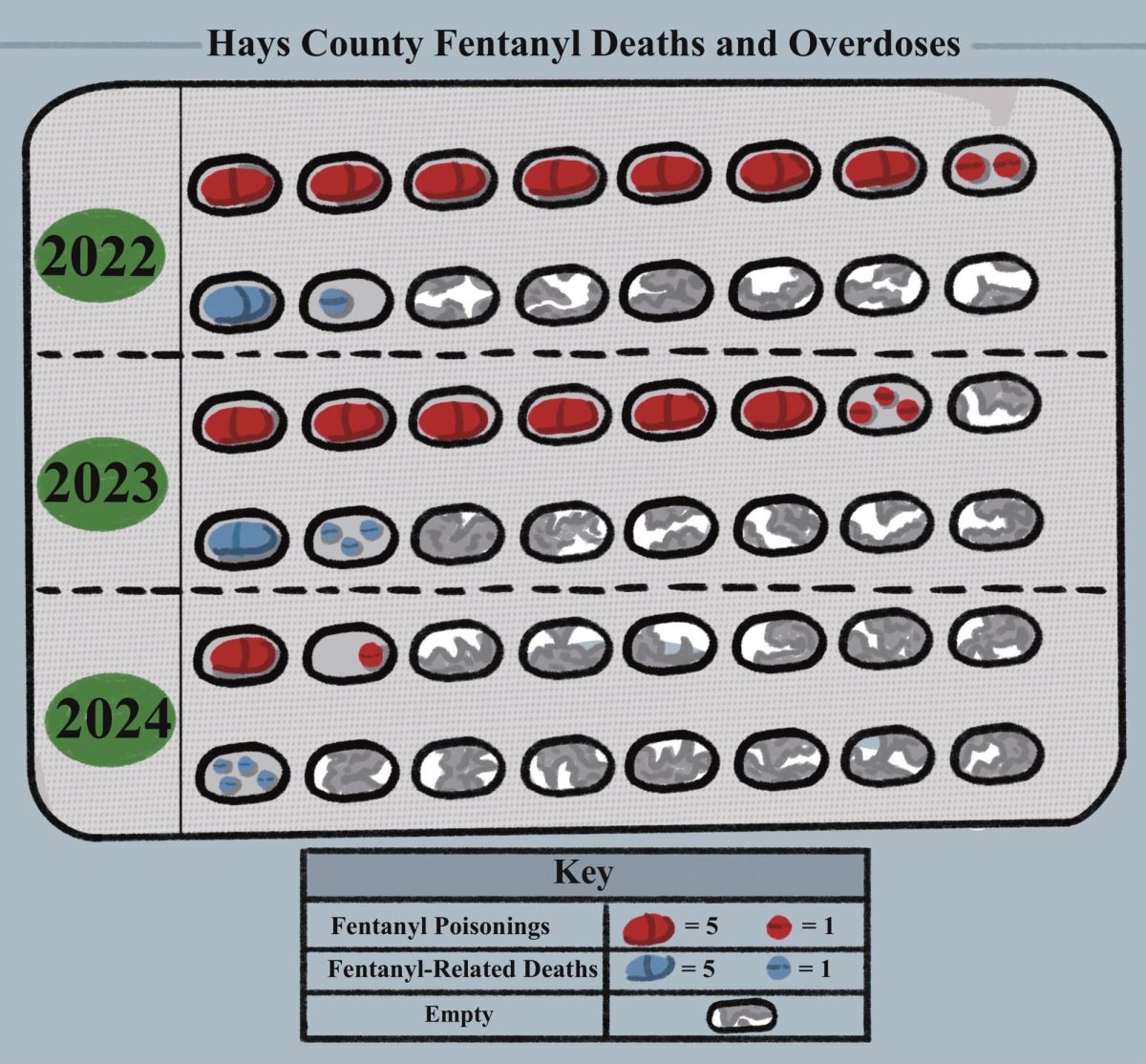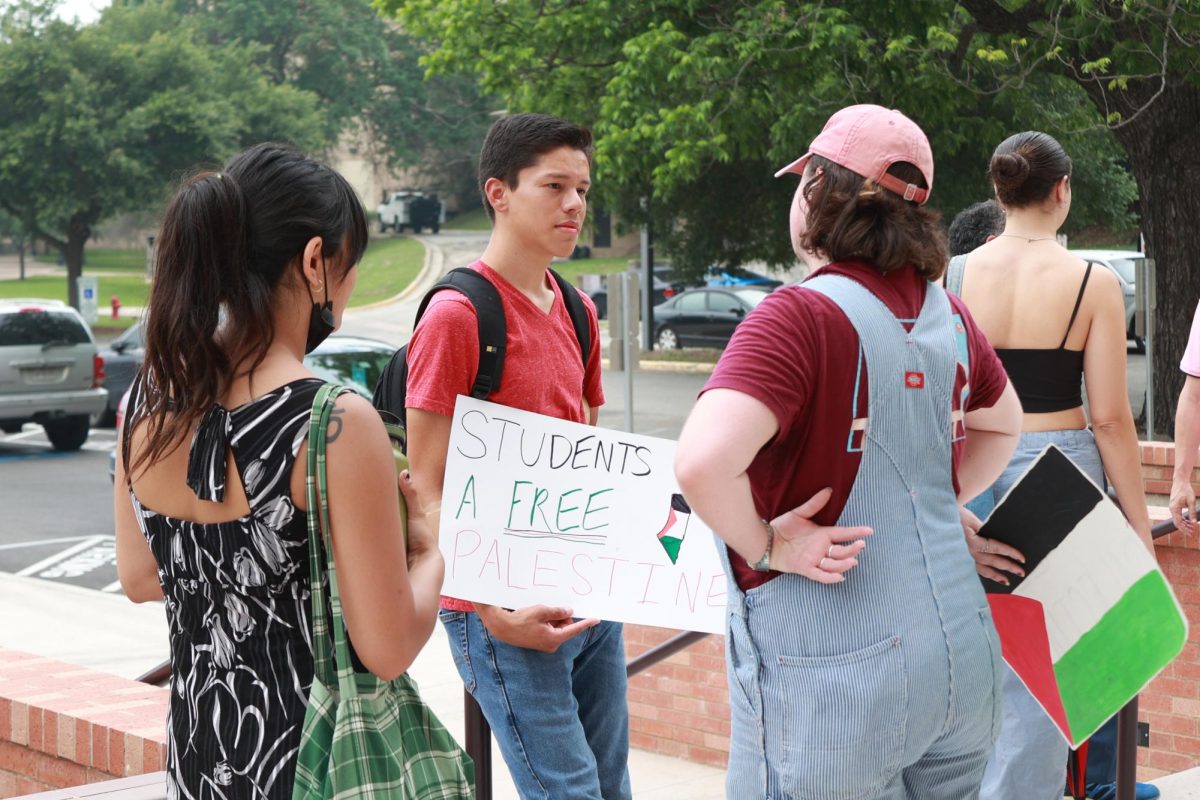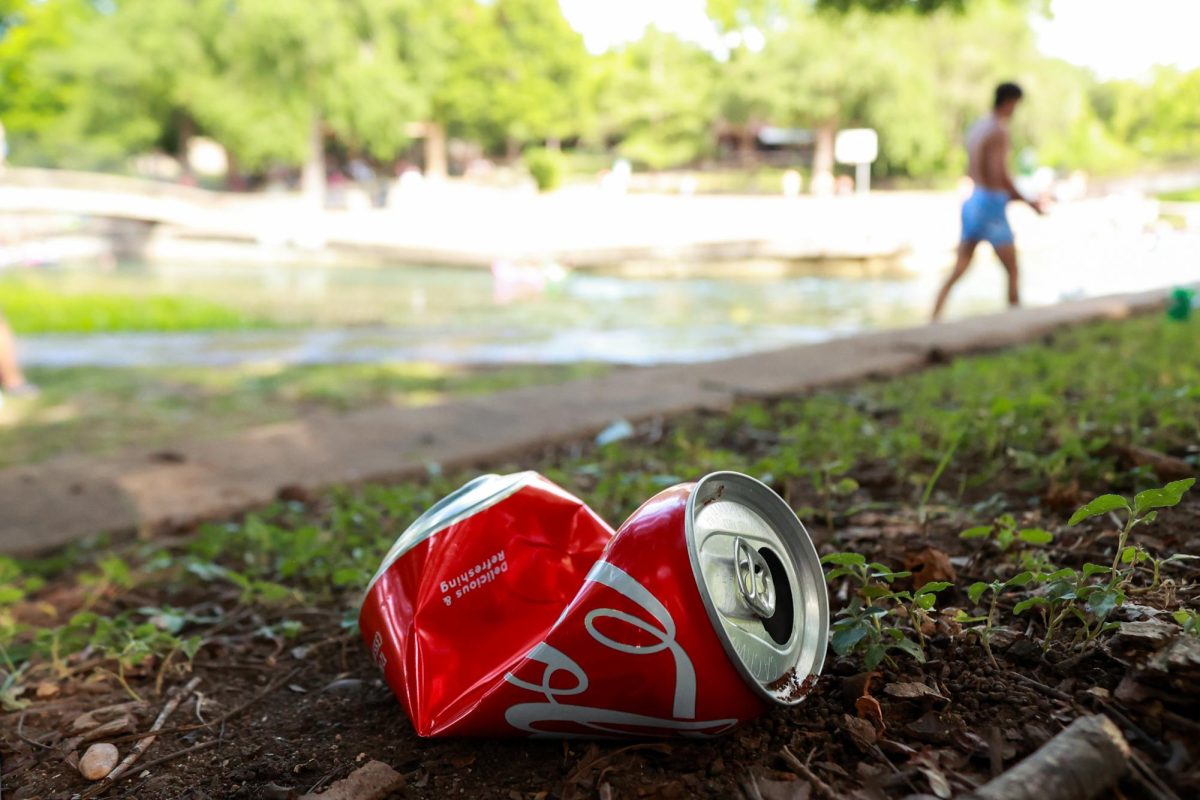On July 21, news contributor Carson Ganong spoke with Director of Housing & Residential Life Rosanne Proite about Texas State’s plans for resuming on-campus living in the fall semester. The Department of Housing & Residential Life’s guidelines can be viewed on the department’s website.
So, the first thing I was hoping you could tell me about is how exactly the policies and the procedures outlined in the Roadmap to Return came to be. Who was involved in that process and what did the process look like?
In terms of housing, we’ve had a lot of people who’ve been involved in overall discussions, planning [and] brainstorming. We’ve included our assistant directors and our hall directors. We’ve included custodians and their supervisors and our maintenance crew. We’ve included our administrative services who do all the contracts and assignments to the halls for the students. So we’ve involved everyone from across the system [and] the department.
We’ve also spent a considerable amount of time reading materials [and] talking with the university’s Chief Medical Officer Dr. Emilio Carranco. He really is our campus expert on what’s going on, and he oversees the Student Health Center as well.
So we’ve involved a lot of people, and we’ve looked at the physical facilities, you know, the layout of the halls, we’ve looked at move-in and how we need to alter move-in. We’ve looked at some policies that we have had on the books for a long time and we’ve made some changes to accommodate what we’re doing in the halls. So there’s almost nothing that we haven’t looked at to try to figure out what’s the new way we’re going to do things this fall.
I don’t want to use the word “new normal,” because I’m hopeful that what we’re doing for this year is not going to be repeated next year. It’s just a different way that we’re going to do things for this year.
So, given how different a lot of the residence halls on campus are from each other, how much flexibility are [hall directors] given to revise or add to the rules set forth by [the Department of Housing and Residential Life] to fit their specific needs?
You know, I think it would depend on what it is they’re looking at. Let me give you an example of one of the changes that we’ve made to sort of accommodate things. So, did you ever live on campus?
I did. I lived in Sterry Hall when I was a freshman.
Okay, well then you can kind of relate to this. So one of the things that we are having to do is, in order to help promote a more safe approach to late-night snacking, shall we say, or cooking or those kinds of things, we’ve never allowed microwaves and we’ve typically put a couple of microwaves in every hall, and that’s what students use. We just felt like we didn’t think we could keep up with cleaning those microwaves and weren’t sure how students would utilize them and whether they would clean them and so on.
So we’re removing our microwaves from the halls, and we are now going to allow students to bring a microwave in. We’re also going to allow students, instead of bringing in one refrigerator that could be 4.6 cubic feet—you know, kind of the taller, skinny one—we’re going to allow each student to bring in a smaller refrigerator. We’re asking students to bring in a surge protection electrical strip, so we hope that will avoid too many circuit breakers going off with all those extra appliances.
But then we looked at some variations as hall directors brought some different scenarios up, so we’re trying to adapt as best we can but we’re pretty much asking everybody to go through their supervisor if they come across a situation that they need some kind of alteration on. We’ve got to be more all informed about what’s going on.
If I’m not mistaken, one of the measures you’re taking is eliminating three-person dorms—just cutting those down to two each—and then setting aside some Bobcat Village units for people who need to self-isolate. So my question is, how [have] those measures affected the overall capacity of Texas State’s housing? How many fewer students are we able to accommodate than we [could] in previous semesters?
I think, if I’m not mistaken, I think we’re losing about 16 beds when we de-tripled. There were only about 16 triples in Blanco Hall, so we took one of those beds out, and then we are losing 40 beds in Bobcat Village, and that’s where the isolation beds will be.
Alright. I was wondering if you have enough RAs for [the fall semester]. Has there been any trouble recruiting people to be RAs?
I think that so far we’ve been okay. We always seem to be a little shorter on men than we do on women, so I think that, you know, if we were to run into an issue, I think we might be getting close to having utilized all of our male alternates so that may be something of a concern as we move forward.
With all the new rules and policies in place to keep everyone safe, do you anticipate RAs and RDs will have any trouble enforcing those policies?
You know, I don’t know the answer to that question. Again, everything is so new. I think the two critical issues that we’re looking at—maybe three—are wearing masks out in public. We want students, when they leave their room, to wear their masks. They’re going to be asked to wear their mask on campus in a variety of locations where you’re unable to socially distance and so, you know, what the science tells us and what we’re seeing nationally is where the preponderance of people are wearing masks, the numbers of incidents are holding much more steady. And I think that some of the places nationally that are seeing spikes, as they began to put mask requirements in place, we’re seeing things slowing down. So I think that one is going to be tough.
I’m hopeful that our students, who are coming in three weeks, are practicing at home now. You know, I’m assuming they’re going to the grocery store, I’m assuming that there are some things that they’re doing where they’re leaving their homes and they’re traveling out and that they do have a mask.
We actually are going to be giving our students lanyards that they can wear. It’s a double lanyard [that can be attached to a face mask] so when you take [the face mask] off it’s just sitting down here, and then when you need to put it on, you just pick it up and put it up. So we’re purchasing lanyards so that if a student wants one of these, they can have them.
I know students are encouraged to sort of self-assess every day and, if they think they have any symptoms, to get tested. But if a resident tests positive for COVID-19, are they required to self-report that positive test [and what is the procedure from there]?
If they live on campus, they will contact us, as will the Student Health Center, and we will provide transportation to one of our isolation locations, but we’re going to be encouraging them to go home. We think that, even if they don’t have symptoms immediately, they may develop symptoms, and we’re not in a position to provide health care on a daily basis in the halls. If they are unable to get home, certainly, we want to work with them and so they would be able to stay at Bobcat Village until they were cleared.
I want to ask about Living Learning Communities. I’ve heard that they are very helpful for shaping the experience for freshmen, but I can imagine in this age of social distancing, it might be hard to foster a student community in the way that Living Learning Communities aim to do. Are Living Learning Communities still running this semester, and if so, are they doing anything differently to accomplish their goal in a way that allows for social distancing?
I don’t know that we’re doing anything different than any other hall. I think there’ll be more virtual kinds of things, and I think that when we do plan events or activities, we’ll plan them so that those—I mean, because generally speaking most of the LLCs are smaller units of people, and if they’re in a larger cohort group, then we’ll do something for that group of 15 students and maybe the next time it’ll be another different group of 15.
So where we’re gathering together, it’ll be in smaller groups; there’ll be some virtual kinds of things going on. I think we’ve got to be creative and work with our residents and find places where we can gather but with a little more space in mind.
Obviously, the university’s current plan is to resume face-to-face classes in August and continue through the fall semester. But the decision to move summer II classes online happened, really, just a few days before the semester started. Does [the Department of Housing and Residential Life] have any plans that they’re preparing just in case something similar happens with the fall semester?
Like just about everyone else, we kind of tried to look at a variety of scenarios: What would happen if we start late? What would happen if we end early? What would happen if—and there’s only so much you can sort of “what if,” but I think that we will do what we’ve done in the past, which is roll with it. We’re trying to be as prepared as we can to provide information and support to our residents as best we can.
You know, and it’s difficult to foresee what the future is going to bring, so I think the biggest factor in keeping people feeling secure and safe is communication.
Is there anything you want to add or anything you’d like to make sure people know in regard to housing for this coming semester?
I just think people should continue to check the website. There’s new information that goes up frequently; [we’re] hoping to have some additional information up by the end of this week on the housing page, but the university is continuing to update things. We’re encouraging students to just keep checking their university email because that’s how information is being pushed out with links to the appropriate web pages.
Director of Housing & Residential Life talks on-campus living in fall
July 21, 2020
In this file photo, incoming freshman Abby Cooper rolls her belongings on a cart into Gaillardia and Chautauqua Hall, Saturday, Aug. 17, 2019, on Student Center Drive at Texas State.
Donate to The University Star
Your donation will support the student journalists of Texas State University. Your contribution will allow us to purchase equipment and cover our annual website hosting costs.


